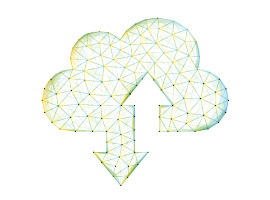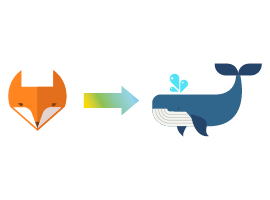- Program
- Program
- Schedule
- Business, Leadership & Organization
- Cloud Platforms & Infrastructure
- DevSecOps
- Kubernetes & Cloud Native
- CI/CD: Automation & Delivery
- System Design & Software Architecture
- Observability & Reliability
- DevOps Transformation Day
- Platform Engineering Summit
- Kubernetes Bootcamp
- Advanced Kubernetes Bootcamp
- DevSecOps Days
- Speakers
- More Program
- Program
- Program
- Call For Papers
- Program
- Program
- Program
- Tickets
- Tickets
- Tickets
- Tickets
- Tickets
- Tickets
- Tickets
- Program
- Formate
- Inhouse
- Blog
- Info
- DevOpsCon
- Downloads
- Sponsors & Expo
- Sponsors & Expo
- Info
- Camps
- Editions
- Jetzt anmelden
- Register Now
- Register Now
- Register now
- Register Now
- Register now
- Register now
- Register Now
Oct
11,
2023
Kubernetes is a cloud-native technology and can be comfortably combined with other cloud services. Besides the classic self-managed variant, managed Kubernetes services like AWS EKS, Google GKE, or Azure AKS also shine due to their simple deployment and management and are enjoying increasing acceptance. However, this symbiosis also comes with...
Mar
31,
2021
Part 3: Data on Kubernetes Served with Love <br/>
What can we accomplish as a community when we work together? If the Apache Cassandra community is any proof, quite a bit. We’ve built a pretty amazing database over the past 10+ years. We’ve also helped each other when learning how to...
Mar
10,
2021
Managing data at scale is a big challenge. Aside from simply having lots of data, we have to be able to use it effectively over time. How we index our data can make it easier to use, but that indexing approach can evolve over time based on what we want...
Jan
18,
2021
The history of endpoint security has gone through many stages. Yet, in 2021, our tools and processes are no longer necessarily appropriate to the threats. A new generation is needed to address current threats. One possible solution is XDR - Extended Detection and Response.
Dec
7,
2020
Over the past twenty years, there have been several big trends in distributed computing. Today, we have more developers using microservices designs to decompose applications into smaller and more manageable units. Apache Cassandra was built for cloud data and is now becoming the choice of developers for cloud native applications.
Feb
25,
2020
After the first steps with containers have been taken, you might want to bring your application clean, stable and continuous into a production environment. In his session at the DevOpsCon 2019, Alexander Trost shows how GitLab CI can be used to continuously deploy applications on Kubernetes.
Oct
1,
2019
Since version 1.8, Kubernetes has had role-based access control (RBAC). In his session at the DevOpsCon 2019, Jan Bruder introduces the audience to the basics of authentication and role-based access control (RBAC) in Kubernetes.
Jan
26,
2018
A system such as Kubernetes can be viewed from different angles. Some think of it in terms of infrastructure, as the successor to OpenStack, although the infrastructure is cloud-agnostic. For others, it is a platform which makes it easier to orchestrate microservice architectures — or cloud-native architectures, as they are...
Stay Tuned:
Explore other Tracks
Business & Company Culture
Navigate the Human Side of DevOps.
Cloud Platforms
Scale Your Cloud Apps with Terraform, Serverless & beyond.
DevSecOps & Cloud Security
Secure DevOps from code to cloud with shift-left practices and AI.
Containerization & the Kubernetes ecosystem
Kubernetes: from fundamentals to advanced edge deployments.
Continuous Integration & Continuous Delivery
Automate Your Processes: Build High-Performance CI/CD Pipelines.
System Design & Software Architecture
Build scalable microservices with cutting-edge tools and patterns.
Observability & Service Mesh
Discover how tools like Grafana, Cilium, and OpenTelemetry can transform app data.
GET DEVOPS NEWS AND UPDATES!
Join our community and stay up to date!
GET DEVOPS NEWS AND UPDATES!
Join our community and stay up to date!
GET DEVOPS NEWS AND UPDATES!
Join our community and stay up to date!
Unlock Exclusive Discounts & Free Recordings Today

Register for a free devmio Fullstack membership to secure:
 6 months access to session recordings.
6 months access to session recordings.
 $100 discounts on DevOpsCon New York tickets.
$100 discounts on DevOpsCon New York tickets.
 1 year unlimited access to devmio - the conference platform.
1 year unlimited access to devmio - the conference platform.
Sign Up today and get a taste of DevOpsCon New York! Free for a limited time.
GET DEVOPS NEWS AND UPDATES!
Join our community and stay up to date!
GET DEVOPS NEWS AND UPDATES!
Join our community and stay up to date!
Hoi Amsterdam - We Are Coming Soon!
Join Our Community to stay ahead with the latest trends, whitepapers, webinars and Early Bird Offers.

GET DEVOPS NEWS AND UPDATES!
Join our community and stay up to date!







